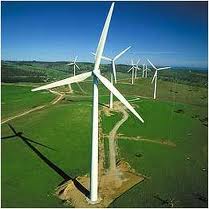The Australian renewable energy industry appears to have been split asunder by confirmation this week that some of the major players were willing to cut a deal with the incumbent utilities over the future of the renewable energy target.
The admission by Infigen Energy Miles George at the All-Energy conference in Melbourne on Wednesday that he was prepared to see the 2020 target diluted in return for longer term targets, higher stepping stones and “greater certainty” provoked a lot of surprise, and a mix of support and anger.
It appears that the renewables industry has been split into two. There are those who believe that clean energy is on the right side of history, and the right side of economics, and should stand firm as fossil fuels are slowly priced out of the market.
There are others who fear that failure to reach a compromise risks a “scorched earth” scenario, where the incumbents, backed by the weight of ideological support in the conservative governments in power in Canberra and the state capitals, effectively bring renewable energy development to a halt.
If there is any doubt over such intentions, you only have to read WA Energy Minister Mike Nahan’s remarks that he would prefer to invest in renewable projects interstate rather than dilute the value of assets in his home market.
Queensland’s Campbell Newman has fought to have the LRET removed entirely, “independent” so-called “consumer watchdogs” such as state pricing regulator IPART have argued the same. And while federal environment minister Greg Hunt has nominal carriage of the LRET, the long trousers are worn by industry minister Ian Macfarlane, whose portfolio includes energy and who has prior form on bringing renewable energy targets to a grinding halt.
The extent to which the renewables industry is prepared to compromise came in one suggestion that the 41,000GWh fixed target be retained, but that gigawatt hours be subtracted from the target via any coal-fired station that is retired permanently from the market.
It sounds like an extension of the Direct Action emissions reduction fund, or the contract for closures policy. The removal of a big brown coal generator such as Yallourn or Hazelwood, for instance, would take around 14,000GWh of annual production out of the market.
If that was deducted from the renewable energy target, it would effectively take the target down to where the likes of those asset owners were pushing for in the last review. The removal of a large baseload generator would also help lift wholesale prices.
Many in the renewable energy space suggest the industry has become the victim of its own lack of ambition and its failure to present a united and effective lobbying body. Greens leader Christine Milne has often berated the clean energy industry for not standing on principle.
As it turns out, the industry is at a virtual standstill, with no contracts being written by the big utilities and financiers standing on the sidelines. Some of the better projects are still trying to find a way to market via innovative financing options, but others have given up.
The wind industry is the most impacted by the standstill, and will be by any dilution of the target, as it means that solar projects will soon compete on cost and many “second tier” wind projects will not see the light of day. The solar industry is less impacted, because a lot of its focus is currently on rooftop and distributed projects, but it is appalled by the developments because they have the potential to impact large-scale projects in the future.
Several large international equipment suppliers have told RenewEconomy in the last few days that they are turning their focus towards neighbouring countries, including Thailand, Vietnam and Malaysia – which have weaker renewable resources but better policies.
This is, in effect, a repeat of the situation nearly a decade ago, when last Macfarlane was in the energy portfolio, and Australia’s leading renewable energy developers at the time – such as Pacific Hydro and Roaring 40s – swung all their efforts into international markets.
Just how the renewable energy industry works itself back into the market will be interesting to see. One thing is clear, the fossil fuel generators have never held so much market, regulatory or political sway as they do now – with the possible exception of a decade ago.
The difference now is that the coal-fired generators, in particular, can see where their future lies, and it is inevitably in closure. They just have the means to ensure that they can clip the ticket on the way out.








